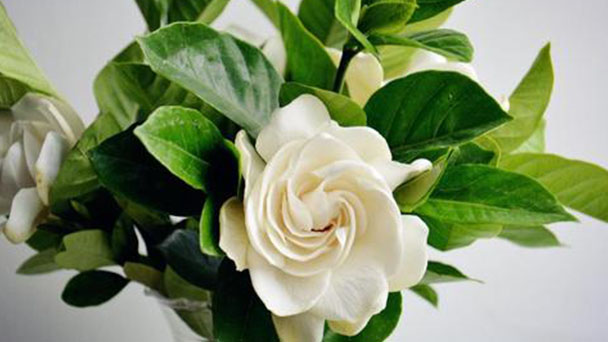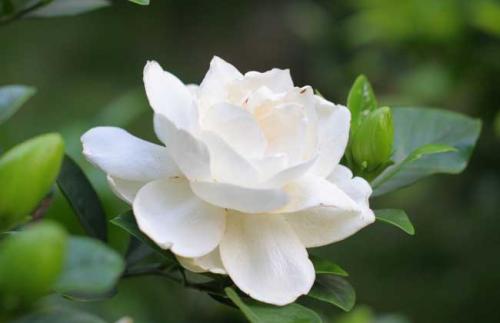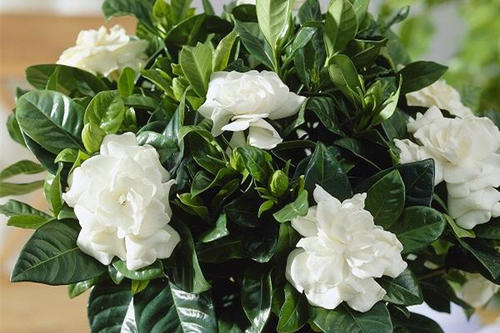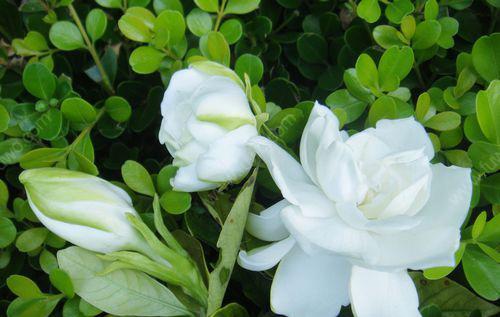Tips for Cape Jasmine care
Written by Maggie
Oct 13 2021

Cape Jasmine, one of the most delicate flowers to grow at home. Growing this flower presents a number of challenges. Now, let's see some tips for Cape Jasmine care.

Cape Jasmine's care for leaves yellowing are whitening
The yellowing and whitening of Cape Jasmine leave may be due to inadequate watering. Too much watering can cause erosion of cape jasmine roots and can't absorb nutrients and water. Too little watering can lead to slow plant growth. In addition, poor light, strong light exposure, too much fertilizer, too little nutrients, or too little temperature can cause Cape Jasmine leaves to turn yellow and white. The following are Cape Jasmine's care for leaves yellowing are whitening.
1. Watering care
The yellowing and whitening of Cape Jasmine leaves may be caused by improper watering. Overwatering causes soil to water and causes erosion of Cape Jasmine roots, which can affect the normal growth of Cape Jasmine. Too little watering can slow the plant's growth, leaving Cape Jasmine's leaves dull and even yellow and wilted. So we need to supply sufficient water in its growing period.
2. Light care
The yellowing and whitening of Cape Jasmine leave may also be due to the lack of light. If Cape Jasmine is kept in a dark environment for long periods of time, it will not grow well because of insufficient photosynthesis. Cape Jasmine, on the other hand, does not shade when the sun is too strong, and Cape Jasmine leaves turn yellow and white from sunburn. So we need to put it in a place with good light.
3. Fertilizing care
In addition, the white hair and yellow color of Cape Jasmine leaves may also be caused by improper fertilization. If too much fertilization is applied to Cape Jasmine, the high concentration of fertilizer in the soil will cause root burning and the normal growth of Cape Jasmine will be affected. Under fertilization, Cape Jasmine doesn't have enough nutrients to grow properly.
4. Temperature care
Low temperature is also a common cause of the yellowing and whitening of Cape Jasmine leaves. Although Cape Jasmine can withstand low temperatures, low temperatures may lead to yellowing of Cape Jasmine leaves. In fact, most plants turn yellow because of low temperatures. And cold temperatures can cause frostbite, which can prevent Cape Jasmine plants from growing properly. When the temperature is too low, move it indoors to avoid frostbite.

Cape Jasmine care for leaf tips blackening and drying
The black and dry leaf tips of Cape Jasmine may be related to soil and pests. During conservation, the soil is too acidic or alkalinized and caked, and the root system cannot grow normally, which will cause the black and dry leaf tips of Cape Jasmine. The tip of Cape Jasmine's leaves can also turn black, dry, or shriveled after insect infestation during growth due to poor conditions or poor maintenance. The following are details of Cape jasmine care for leaf tips blackening and drying.
During the growth of Cape Jasmine, the leaf tips become black and dry, which may be caused by the excessively acidic soil. Cape Jasmine likes acidic soils, but excessive use of ferrous sulfate solutions during growth can make the soil more acidic. The soil is too acidic for Cape Jasmine's roots to absorb and grow properly, causing Cape Jasmine's leaf tips to turn black or dry.
Cape Jasmine loves acid soil, and during its growth, the tip of Cape Jasmine's leaves gradually turns black and dry after the soil is alkalized. Long-term failure to change soil will result in alkalization and hardening of the soil, which will prevent the root system of Cape jasmine from breathing properly, leading to poor growth of Cape Jasmine. When we care for Cape Jasmine, the soil in the pot of Cape Jasmine should be replaced regularly to allow it to grow normally.
During the growth of Cape Jasmine, the tip of the leaves becomes black or dry after being invaded by insects. During conservation, Cape Jasmine was in an inappropriate environment and was affected by root-knot nematodes after its growth deteriorated. After insect-infested Cape Jasmine leaves turn black or dry. They need to be cut off and sprayed on Cape Jasmine.
During its conservation, Cape Jasmine needs to be managed and given sufficient light, water and fertilizer to allow it to grow normally. When we care for Cape Jasmine, proper watering and fertilization should be done, and the soil should be kept moist to ensure sufficient nutrients. Spraying Cape Jasmine on a regular basis to prevent pests and diseases can help Cape Jasmine grow better later.

Read Next:
Cape Jasmine Profile
Cape Jasmine (Gardenia Jasminoides) Care & Propagation Guide
Latest Updated
- Benefits of Bugleweed - 7 Science-backed Health Benefits
- Bugleweed Dangers & Side Effects - Is It Poisonous?
- How to Plant Evergreen Trees - What You Should Know
- When to Plant Evergreens - Grow Guide for Evergreen Trees
- 12 Wonderful Evergreen Shrubs for Your Garden
- 12 Popular Evergreen Plants with Pictures for Beginners
- When And How To Prune A Lilac Bush Like a Pro
- How to Grow & Care for Lilac Vine (Hardenbergia Violacea)
- Japanese Lilac Tree (Syringa Reticulata) Care & Propagation Guide
- Shumard Oak Pros and Cons - What to Know
Popular Articles
- Winter maintenance of Antirrhinum Majus
- How to Grow Terminalia Mantaly Tree
- How to Grow and Care for Crossostephium Chinense
- How to grow Antirrhinum Majus in spring
- Peristeria Elata (Dove Orchid) Profile: Info & Care Guide
- Underwatered Snake Plant (Sansevieria Trifasciata) - Signs And How To Fix
- How to Care for Brazilian Jasmine Plant (Mandevilla Sanderi)
- How to Grow & Care for Graptopetalum Purple Delight in Summer
- Rosa Chinensis (China Rose): Plant Growing & Care Tips
- How to Care for Baby Sun Rose (Aptenia Cordifolia)